![[Li Po: It's Only a Game]](lipoanim.gif)
Adventure Gaming
![[Li Po: It's Only a Game]](lipoanim.gif)
|
Li Po's Hermitage Adventure Gaming |
You can find my third-edition generators by following these links:
D&D Third Edition
Ravenloft Character Generator, Third Edition D&D
d20 Modern Character Generator
d20 Call of Cthulhu Character Generator
AD&D2 Generic Character Generator for MS-DOS.
AD&D2 for very limited machines for MS-DOS.
Alternity Science Fiction Character Generator for MS-DOS
Alternity Spaceship Generator for MS-DOS
Birthright Character Generator for MS-DOS.
Dark Sun 2 Character Generator version 2.3a and
documentation for MS-DOS.
Lankhmar Character Generator
Jakandor Character Generator
Planescape Character Generator for MS-DOS.
Psionics Character Generator for MS-DOS.
Red Death Character Generator for MS-DOS.
Skills & Powers Character Generator for MS-DOS;
now version 4.20.
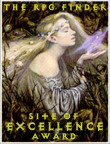
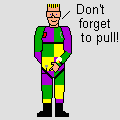
Li Po is a peace-loving human cleric of the "Kwan Yin" sect. He admires the classic Chinese poet ("Li Po" or LiBei) whose name he borrowed, and respects the rights of all artists and writers. For a time, he was an adventurer. He developed the "Speak with Dragons" spell which has been reprinted in the Priest's Spell Compendium. He has devoted his later life to the arts of healing, scholarship, and promoting peace and understanding.
Li Po offers a free token of his esteem for those who produce, and those who play, his favorite adventure game, "Advanced Dungeons and Dragons". Help yourself to any the following character generators. Each will produce a full character sheet, with extensive personal characterization, statistics, combat tables, and saving throws for every level. You and your group will be able to begin playing TSR's fantastic gaming system without delay or tedious paperwork.
Li Po and his friends will appreciate your comments, and want to hear about any problems you find. Li Po has decided not to make the source code available, for fear of misuse. (There have been several requests, "I want to make evil player characters.")
In today's secular, cynical era, TSR's publications offer a glorious vision of heroic goodness. Li Po wants you to enjoy them as much as he has. Happy adventuring!
My programs are constantly being adjusted.
I write DOS programs which must be run from directories with no more than 8 letters in their names. (Thanks for the discovery J.A.!)
Or E-mail me for the current versions, specifying which one(s) you want: Classic AD&D, Classic Psionics, Planescape, Red Death ("Gothic Earth"; presently undergoing debugging, will you help?), Dark Sun, Skills and Powers, Lankhmar, or Birthright. Happy adventuring!
Li Po wants everybody to enjoy adventure gaming as much
as he and his friends have. The site receives several requests
each month, all asking "How do I find a campaign
near my home?"
There are some on-line lists of campaigns by geographic
location.
There are also multi-user
dungeons. The venerable site webrpg.com , founded at the same time as this page, finally
closed in 2009.
Another approach is to post notes on the bulletin boards
of shops where TSR's products are sold. This usually gets results.
Best of all, though, is to begin your own campaign with a few like-minded
friends, then post for new members.
In choosing a campaign, keep a few things in mind. The best
ones are low-lethality, with player characters being hassled and
embarrassed but not killed. If player characters are fighting
among themselves, it's a sure sign that the DM isn't doing much of a
job of creating interesting opponents. Campaigns with evil
player-characters are uncommon, and are best avoided. One of the
reliable signs of a good campaign is that the player characters
eagerly share their magic items and property with one another.
May you be successful in your quest for a good gaming group. The
pleasure you'll find there is second only to the joy of doing
good in the real world.
The program generates, saves, and offers
to print,
a complete PC or NPC sheet under the new "Skills and Powers" rules.
It
includes all the new character generation options, including
statistics,
subabilities, complete awarding and accounting of character points,
racial and class abilities (including priestly focus as per "The
Complete
Priest's Handbook"), traits, weapons proficiencies,
specializations, and
masteries, non-weapon proficiencies, and even personal appearance
and
idiosyncrasies. Of course, there are also complete weapon and
combat tables
for all levels,
handy notes on the new combat bonuses and penalties, saving throws,
and
even lists of recommended equipment. You can add up to
five of your own definfed character races. You can choose your
own milieu, from Stone Age to Victorian, and even Planescape.
Finally, the psionics system
has been
integrated into the "Skills and Powers" system.
In response to your suggestions, it is now possible to choose a
variety
of possible "let's suspend this rule" options. And you can switch
on or off the controversial "unicorn status" question, which
has pleased some
adult gamers and scandalized
others.
here for version 4.20.
Li Po thanks these testers, who helped me with input when "Skills and Powers"
was being developed:
-- Abraxas
Special thanks to champion Dark Sun bug-finder Jason Hendricks!
Also to Knut Iversen, Guthrie Ward, Tony Ribitski, Vincent Roiron,
Monica McFadden, Rickard Nilsson, Andreas Lindholm,
David Zinn, and Jeremy Reaban.
If you're unfamiliar with the "Dark Sun" setting, it's an
unusual AD&D variant, set on a
world where environmental disaster is
followed by a gritty struggle for survival.
(There are no
"gods", and ordinary clergy
contract with amoral forces of inorganic matter.)
In keeping with
the science-fantasy motif, psionics are ubiquitous,
while wizardly magic drains the remaining
life from the planet.
"Law" and "Chaos" do not
struggle here, and "Good" and "Evil" are simplified to
environmentalism vs. exploitation, with the druids
and certain conscientious wizards
being the exemplars of goodness. The final product
in the line was "The Rise and Fall of a Dragon King",
tells the story of the moral struggles and final
salvation of one of the milieu's principal bad guys.
The Sources of Heroic Fantasy
Goethe's
"Faust"
Heroic Fantasy on the Internet
Like
many others, I welcome Mr. Gygax's return to his rightful
place as the recognized father of AD&D. The happiest
features of the game -- alignment, the planes, the
most popular monsters, the laughter, the best classic
dungeon crawls, and even the idea of role-playing
beloved characters -- are largely the products
ofs his genius. Li Po is grateful. E-mail
Gary at
ggygax@genevaonline.com.
Anyone familiar with propaganda and thought-control
will have no trouble recognizing the technique, used with great effectiveness
by the old-time communists, the modern-day "health gurus",
and others you can name..
Tell the public that everyday things that seem harmless but
which they don't fully understand
are dangerous and wicked, that they are alone in a horrible world,
and that only you can help them find safety and meaning.
Claim the moral high-ground, and tell half-truths or even
outright lies. When you are caught lying, deny everything and
invent counter-accusations.
Some people will believe you.
Teen suicide? As a medical examiner, the one's I've seen have
followed (hours to days) failure of a love relationship, or followed
(hours) an episode
of physical or verbal abuse by a parent or other very
special person; less often, the cause is
severe chronic illness. A kid who's abused, lacks
social skills, or is chronically sick may use fantasy as an escape.
Yet the evidence below suggests that role-playing teens are actually
less likely to suicide.
Religious Right claims
A
Primer on Occult Philosophy
The writer restates the familiar Religious Right belief
in a monolithic
occult conspiracy, also including evolution and acupuncture,
introduced by Satan to Nimrod at the Tower of Babel.
New
World Order is Being Driven
Through Your Children Lists "Dungeons and Dragons" together
with "My Little Pony" and "Smurfs"
as "definitely anti-God and pro-Satan".
Same
group, "101 Dalmatians" is also satanic
Logos -- [link is down]
obvious untruths. ("In D&D, 'non-human soldiers' are
'expected to rape freely at every chance.'")
Soc.Religion.Christian
archived comments. The first is from a new Christian who
repudiates his past as a gamer; he draws uncritically on such sources
as Mike Warnke's "Satan Seller", which was exposed as a hoax by
his fellow-Evangelicals. The second is a review of Patricia Pulling,
which concludes "Lying, however, isn't Christian at all."
Dungeons
and Dragons: Concern for the Christian Mr. & Mrs.
Mel Gabler, the ultraconservative Texas textbook critics.
They warn that young people may be introduced to world mythology,
and may devote excessive time and energy to role-playing.
Interestingly, there is no talk of
the game leading to suicide or murder. This site
also has long essays against Judaism, Islam, Michael Jackson,
Mormonism, Hinduism, Carl Sagan, and much more. This is the
same Mel
Gabler who is quoted in "The Stupidest Things Ever Said": "Too
many textbooks and discussions leave children free to make up their
minds about things."
Chick Publications, radical
Protestants, once
published a
comic book
called "Dark
Dungeons", depicting gamers acquiring
supernatural powers and being driven to suicide.
The company
has also published a collection of young-earth creation-science
lies in comic-book form,
and an anti-Roman Catholic
comic which calls communion "the death cookie". The latter speaks
for itself, while young-earth creationism was condemned as dishonest
by every U.S. Nobel science laureate in the amicus brief to the
Supreme Court in "Edwards". Of course, if you would rather believe
a comic book, that is your business.
Demonbuster (now down)
gives only passing reference to Dungeons and Dragons,
. The same page claims that Cabbage Patch dolls
also teach satanism, and that people who are born out of wedlock
"have so much trouble with their church relationships; they are cursed."
The site also devotes a full page to diabetes --
"squid-like demons attacking ten parts of your body."
Debunking the Religious Right claims
James
Dallas Egbert -- the most famous "role-playing game fatality"
("Live Action Role Playing", not AD&D); he actually turned
up alive a month after he supposedly "died playing AD&D"
The New Satanic Panic: Link is now down.
From the cult awareness and information center.
Review of Chick, false memories, and so
forth.
Ontario
Center for Religious Tolerance Gives statistics. Finds
no basis for the Religious Right claims of murder, suicide,
or occult bondage.
Ontario
Center for Religious Tolerance
Frequently
Asked Questions [Link is down.] Full of facts. Reminds readers, among other
things, that AD&D fantasy was derived mostly
from the Christian fantasy milieus, including
Tolkien, and that even Pat Robertson's channel has a Prince Valiant
series.
British
Journal of Psychology; link is now down. Studies on the personalities of
role-players. No surprise -- we tend to be bright, introverted,
"less feminine / less androgynous", "less empathic" males, and
to like books and science. (Fits me pretty well anyway...) Link is now defunct.
Charney Cale's Essay
A high-school student's effort.
All the links about her seem to be down, but perhaps the long essay by
J Freeman will reappear. One
Patricia Pulling, who claimed that her troubled son's tragedy was
caused by
his adventure gaming, ran a defamatory campaign
which was taken up by certain Christian fundamentalists. Here is
a
rundown on her credentials and her approach, including the
fact that her anecdotes are apparently all fictitious.
"At some point, we might begin to assume that game-bashers
are not merely deluded, but
deliberately dishonest...." No kidding. To be fair, the syndrome
of
wholesale make-believe is not confined to any of the great
world-faiths,
or to either "liberals" or "conservatives". Nor does it really
dominate
any of them, as much as I regret B.A.D.D.'s association with my
own modern-Christian outlook. Thanks for the posting. The link is now down.
"Giving
the Devil More than his Due": How people who have
alleged massive satanic conspiracies have falsified evidence.
Link is now down.
Also worth reading: J.R.R. Tolkien's essay, On Fairy Stories,
available here. Tolkien argued that human beings, created
by God in the image of God, naturally create and love secondary worlds.
C.S. Lewis found this was true to his own experience, and this was
an important step to Mr. Lewis's becoming a Christian. Tolkien's
story Leaf by Niggle develops the theme unforgettably.
Dragonraid
Game: Links all seem to be down.
This is a Christian
fundamentalist derivative of AD&D. The central message of the game
is that the world
in which you and I live is a sinkhole of filthy evil from which the
faithful must remain
aloof. Even people who try to live good lives without believing in your theology
deserve to die.
This is not how I understand the Good News of Salvation in
Jesus Christ (the word "Manichean"
comes to mind). Rather than being a "Lightraider" battling wicked
unbelievers, most of
my battles as a Christian are against my own sin and folly. I also
know how much other
people like to believe ugly lies in order to feel intellectually
and spiritually
superior. Nevertheless, I appreciate
these fundamentalist brothers'
and sisters' appreciation for role-playing,
and honor their own quest for goodness and meaning in our
all-too-secularized,
all-too-frivolous world. Check out "Dragonraid". I think you'll
find much here that you will like.
Gamers for Christ --
news group
Rules Fixes for Christian Gamers
One explicitly Christian campaign world has already been presented
in Charlemagne's Paladins which hopefully will be reprinted
sometime soon. Adventurers could choose from a historical, legendary,
or fantasy milieu; I suggested a psionics-based fourth option.
Legendary: Paladins, conjurors, diviners, enchanters, and illusionists
are also permitted. Wizardly spellcasting takes a long time,
and wizards tend to be secretive. Alterations, conjurations, divinations,
enchantments, illusions,
work. Necromantic and evocation spells do not work; supposedly abjurations
do not though there must be some "dispel magic".
Clerics
now have major access to sun. Paladins have access to divination,
healing, necormancy, and protection.
Fantasy: Rangers are also permitted. Paladins have access to the combat
sphere. Here are my suggestions.
A good Christian campaign will probably
give some attention to
the holy angels,
the foul fiends and the
roots of sin. But the main focus will
still be on the fun of gaming, which mirrors the goodness of God's
creation. As imaginary adventurers in such a campaign,
we practice our own real-life roles as creation's guardians and caretakers,
and as representatives to those who do not yet know what Christ has done
for them.
I would urge each group to develop their modifications
together, as Christian ladies and gentlemen. When this happens, there is
the possibility both of coming up with quality rules that can be shared
with others, and the likelihood of building friendship, trust, and goodwill.
In the original "Players' Handbook", Gary Gygax designed
"Phantasmal Force" as a powerful spell which did more than just
create images. Those who failed their saving throw, which was
allowed only if there was an "attempt to disbelieve", took real
physical damage. The abuse potential was obvious, the
difficulty in adjudicating this made for great problems, and the
whole premise of an illusion doing real damage was implausible
even in a world of heroic fantasy.
Over the years, published adventures almost never treat
phantasmal forces, or higher-level versions of this spell, as in
the published rules. The "D&D" rules allowed illusions to
produce damage which was itself only illusory. The AD&D second
edition contained a long section indicating that the whole
business was not going to be resolved. The "Complete Wizards'
Handbook" was more blunt: the lower-level illusions provide
"neither direct protection from damage nor the ability to inflict
damage on opponents" (page 16).
In the literature of heroic fantasy, as in real life, deceptive
images fool but do not hurt directly.
I spoke with Gary Gygax about this years ago. We had an
enjoyable chat, and he was very gracious. Mr. Gygax cited "voodoo
death", i.e., a witch-doctor's curse which is followed by the
victim's sickening and dying, to justify the idea that tricking
the mind can produce physical damage. This was the basis for the
original description of "Phantasmal Force."
As a pathologist who's taken a special interest in the business
of mind and body, I remain extremely skeptical. Accounts of
"voodoo death" are strongly suggestive of actual criminal
poisoning or after-the-fact prophecies rather than "mind over
matter", and in any case "voodoo death" always takes hours or
days. Contemporary claims fare no better. The abilities of
hypnotic subjects and meditators to alter their physiology are
singularly unimpressive when examined in the lab. In the 1980's,
I debunked the original work on mental imagery as a treatment for
cancer -- the published cases in the famous book included nothing
that's out-of-the-ordinary, and one patient almost certainly
never even had cancer. And by now, I think everybody knows that
the "mind-over-matter" claims made for firewalking are a sham, and
that the phenomenon takes advantage of little-known phenomena in
normal physics.
A diseased heart is subject to rhythm disturbances under stress,
and these can be fatal. A sudden rise in blood pressure, or
straining against a closed glottis, can kill a person with the
right underlying disease. Stress hormones, notably epinephrine,
can produce "catecholamine cardiomyopathy" or acute
rhythm disturbances, either of which can kill a person -- a fact
which is supposedly known to those who supervise torture in the
pariah nations. And cadaveric spasm is an extreme situation in
which, as a result of sudden emotional stress, the nerves and
hormones allow excessive influx of cations into the heart and
muscles, so that rigor mortis itself causes, rather than results
from, death. None of these situations is anything like "taking
damage from falling into an illusionary pit of spikes" or being
burned by the breath of a shadow-monster chimera because you "do
not know it is only quasi-real."
Here is how I handle illusions in my campaign:
Follow-up: In the Third Edition of D&D, Li Po's
ideas (which were probably commonplace) were pretty much implemented.
Shadow monsters have a percentage chance of really having their
special attacks work each round.
The "Dungeons and Dragons" game family evolved from real-world
military simulations to a social and intellectual activity in which
players came to indentify with beloved alter-egos. As this
happened, both the literal rules and the spirit of the game
underwent modifications. First, the "minus ten" rule allowed
most players reduced to zero hit points to be resuscitated,
as in real combat.
"Dragonlance" introduced "obscure deaths", i.e., the body falls
into the river, and the player-character is revived somehow
a few scenes later. (The penalty for being killed is simply
sitting out for some game time.) The "Lankhmar" set explicitly
instructs referees to maintain low lethality, with loss of all hit
points merely resulting in disability or humiliation.
The first AD&D "Dungeon Master's Guide" urged referees who might
bend other rules to leave intact the "system shock", so that there
would always be a risk of permanent death to maintain "the thrill of
risking your life." This may be important for some people,
and if that's you and your group, it's cool. I'm a
skydiver, and we're contemptuous of anyone who talks about
"the thrill of risking your life" in the air.
I'm also an autopsy pathologist. 'Nuff said?
Here is how I handle player characters who drop to zero hit points
or below:
Play by the rules and act decently, and (like in skydiving) you needn't
worry about dying.
Jon's Planescape
Site Out of this world!
The house
rules in my own campaign specify that the referee will not
dictate the religious beliefs of any player character.
I once argued, in "Dragon", that "the gods" of world mythology have
always been personifications of our own ideals and ideologies, as well as
comic creatures, figures of fun. It seems to me that this is true from
Homer's "Iliad" to our own day.
In our own world, an organized ministry which specially honors Francis
of Assisi might care primarily for the physical needs of the poor.
One named for Ignatius Loyola might focus on scholarship and
education, a group bearing the name of Maimonides might operate
a hospital, a church named for Dwight Moody would focus on the
bold proclamation of the gospel, and so forth.
Personalities come to stand for ideals and callings, in our
own world and the world of fantasy. Real role-playing, like real-life activism, begins with
fidelity to ideals of goodness and heroism, not to the
far-away personalities themselves.
TSR's wonderful "Planescape" line has finally made this a reality. The
old mythological machinery has been adapted from "Legends and Lore"
and "The Manual of the Planes". But the real conflict is among
factions which mirror the philosophies and credos of our world.
The Guvnurs, like our natural and political
scientists, seek to build a better world by
understanding nature and passing wise legislation. The Godsfolk,
like the Unity sect in my own town as well as many other spiritual
traditions, teaches progressive enlightenment through reincarnation.
The Hardheads, like our Religious Right when it's honest, want to
impose their enlightened code of behavior on all people. The
Red Death seeks fair enforcement of justice, punishing the guilty
in proportion to the wrong done, and making certain
that the innocent are safe.
The Ciphers, like popular martial-arts teachings and other
disciplines, emphasize action instead of discursive thought. The Signers,
like today's New Agers, teach that each of us creates his or her own
reality. The Sensates, like yesterday's existentialists and today's
sensation-seekers, pack their lives with meaningful experiences. The
Takers and the Doomguard recall (respectively)
Goethe's Faust and Mephistopheles, the two principal characters
in the first modern epic. The
Takers believes that being grabby and demanding is good, while the
Doomguard want struggles to cease and the universe to burn out.
The Xaositects, like the dadaists and absurdists of the early
twentieth century, glory in chaos. The Bleakers, perhaps the
most typical group in our own world, perform acts of simple
kindness for their neighbors a world where there is no ultimate meaning.
The Revolutionary League, like the radicals of the sixties,
preaches the overthrow of current authority, with no other agenda.
The Dustfolk,
like today's counterphobic teenage displays, glorify death. The
Defiers are enemies of organized religion, but open to the
possibility of an unknown, transcendent reality. (As the 115th
psalm, my favorite, proclaims: The gods of world mythology
are make-believe. The True God whom we praise lives in the
highest heaven. And what
happens on earth depends on human beings.) The Free League,
like today's postmodernists and freethinkers
at their best, resist all efforts
to impose ideology on others. When personalities and political
agenda become more important than beliefs ("Faction War"),
the present factions no longer represent fundamental
human interpretations of life, and thus are barred from Sigil.
The conflicts among the factions are played out in the strange city
of Sigil, which sits atop the infinitely high spike at the center
of the Outlands, the alignment plane of true neutrality. Every
window, door, and other portal in this city can serve as a
passageway to some other world to anyone knowing the secret of
its use.
"Planescape" clearly derives largely from adult "philosophical" comics,
where dark deeds and dark ideologies are drawn out. Above the
factons stands the mysterious Lady of Pain. In the "Planescape"
mythos, she is the source of all the pain in the multiverse, which
is carried by travellers from Sigil to the various worlds. For
her, and for the creators of "Planescape", it is pain (of body,
of mind, of memory, of spirit) that
motivates and gives
significance to everything else in life. The Lady of Pain
protects Sigil from the incursions of "the gods" of mythology, so
that pain will always be more fundamental to human experience
that any religous dogma. The immediate
inspiration for the Lady of
Pain may be Swinburne's
poem Dolores,
which shocked the Victorian sensitilities of his era. "Pages
of Pain", the novel written in the Lady's voice, gives her a possible
Greek mythology background. In ancient Greek, pathos, the
root of my own discipline of "pathology", covers a range of meanings
from "pain" through "suffering" through "the human experience".
Those of us who believe that the real universe is a far brighter,
happier, and holier place than "Planescape"'s might understand
this myth in only slightly different terms. Pain as we know
it is part of our natural heritage, not something supernatural.
But pain is
interpreted by different people in different ways. We might see
Sigil as the source, not of pain itself, but of our ways of
making sense of suffering.
What are the various ways in which philosophers have dealt with the
central fact of pain?
At the conclusion of "Teahouse of the August Moon", the
Oriental philosopher-narrator
explains, "Pain makes us think, thought makes us wise, wisdom
makes life bearable. May the August Moon bring gentle peace."
Li Po could not have said it better.
Gary Gygax introduced minor magics for wizards, or "cantrips",
into AD&D in the early 1980's. They promoted atmosphere,
role-playing, and fun.
Several people have asked me
how these might be handled, and what they might include.
Officially, the first-level "Cantrip" spell allows the wizard
to cast a limited number of these magics daily.
Cantrips cannot produce tools, disrupt a
spellcaster's concentration, cause or heal damage, or
exert an effect commensurate with any first-level spell. The
duration is generally for the time of concentration.
It seems reasonable to think that cantrips are the first magics
learned by 0-level wizardly apprentices. Therefore, a referee
might...
Conjurations:
summon a mouse, rat, spider, or bee,
or the wizard's own pet.
Divinations:
determine time of day, direction faced,
or depth underground, most of the time.
Enchantments:
influence a person's mood for one round,
make a person sneeze, itch, wink, or yawn,
or charm a small animal for a few rounds.
Saving throws apply for all of these.
Illusions:
make a two-dimensional illusion,
make a puff of colored smoke or a colored light,
produce ghostly noises, or briefly and slightly
alter the wizard's looks.
Evocations:
make a puff of colored smoke or a colored light,
or produce something simple (no tools).
Necromancy:
cover odors, estimate post-mortem interval,
preserve food from decay, produce ghostly noises,
make a plant wilt, thrive, or bloom, or
make hair grow, stop growing, or disappear.
Alterations:
very slightly transform a natural object,
slightly and briefly alter another's looks,
or change the color of a simple object.
Fire Magic:
cook meals, making a small fingertip flame,
make a pretty colored light or a smoke puff,
or light and snuff candles and other small fires.
Air Magic:
blow away dirt, make a strong puff of air,
and catch simple things blowing in the wind.
Water Magic:
clean and dry clothes, floors, or dishes,
wash things quickly, and heat or cool water.
Earth Magic:
remove dirt from clothes or buildings, determine
depth underground, and dig and fill ordinary holes.
Cold Magic:
chill a small object, freeze a small amount of
watery liquid, maneuver safely and easily on ice,
or briefly chill a little, harmless creature.
-- stories of contemporary people who have shown real-life
heroism
in peace or war;
-- organizations and opportunities for teens and young
adults to
do genuine good for
people in real need.
In real life, I am a pathologist.
Finding a Campaign
![[Skills & Powers]](sp.gif)
-- Nick Alberts
-- Kural Antalas
-- Jason Anthony
-- Draamel Arahant
-- Corey Asbruek
-- Jeff Baker
-- Ian Ballard
-- Chris Banks
-- Jareth the Bard
-- Mikie Barrett
-- Robert F. Barrick
-- Christian Baumgarner
-- Brad Beattie
-- Nigel Bennington
-- Thomas Biache
-- Andrew Bourne
-- Jon C. Brekke
-- Brad Bristow-Stagg
-- BooGaa Broadsword
-- Josh Brown
-- John M. Burton
-- Sam Cale IV
-- Theo Carpenter
-- Sean Chapman
-- Lionel R Clark
-- John W. Conner
-- John Constantine
-- Gordon Copeland
-- Thor Crofts
-- David L. Crooks Jr.
-- Keith Davies
-- Jack Davis
-- James Davis
-- "Dartmoor" Dave Derrick
-- Ron "Sid le Garre" Diel
-- Voigt Deiter
-- Frank DeLuca
-- John DeJordy
-- Marco DePalma
-- Jean DesRosiers
-- Kerry Digou
-- Larry Dillon
-- Sean Donahue
-- Chris Dragon
-- James S. the Drow
-- Doug Druker
-- Hector Reinoso Elbers
-- Ian Ferguson
-- David Felstead
-- Rebecca Fenske
-- Dennis Ferruzzi
-- Dirk Flame
-- Lady Fusion
-- Mark Gagnon
-- Mike Garth
-- Caspel Gielen
-- John Gilbert
-- Dominik Goebel
-- Bazil Goldenclaw
-- Jeff Goodson
-- Xavier Gonzalez
-- Jean-Paul Gourdant
-- Adam Gross
-- Guza
-- Holly Habens
-- David Shackman
-- Michael Hallett
-- Rob W. Hamilton
-- Rolant Harmsen
-- David Harris II
-- Alwis Adrian Hohnweg
-- Eric Janssen
-- David Johnson
-- Hvammstanga "Tracker" Jhannesson
-- Damien Johnson
-- Chris Jones
-- Rhys Jones
-- Josh, son of Lance
-- Michael Katcher
-- Amanda Kelly
-- Kurt Knippel
-- Jeffrey S. Lange
-- Rob Lander
-- Gaute Lindkvist
-- Matthias Liffers
-- Robert Liszka
-- Andreas Lindholm (thanks MUCH!)
-- Jerod "Fargo" Lodholtz
-- Paolo Lorenzin
-- Rocco Matassa
-- Mad Max
-- David Mayer-Somer
-- MegaFlash
-- Joe Miller
-- Keith Mervine
-- Aaron McCall
-- Nick McRae (idea for the race editor -- thanks Nick!)
-- Matteo Montanari
-- Marcel Mravec
-- Quinton R. Nelson
-- Neverless (champion bug-finder!)
-- Robert Nichols
-- John Niemann
-- Sean M. Nobles Sr.
-- Michael Norris
-- Luis E. Olcese
-- Marce de Palma
-- Del Perez
-- Orion Pobursky
-- Pronigious
-- Matt Provot
-- Mike Putnam
-- Billy Schmidt
-- Matt Schroeder
-- Scott Rehm
-- Jean-Francois Rysselynck
-- Christian B. Ritter
-- Truls Rostrup
-- "The Rooster"
-- Sam Rowe
-- Emanuele Sacchi
-- Frederic Sauve
-- Matt Schroeder
-- Sam Seig
-- Kevin "Azirith" Smith
-- Brian Smolar
-- Bo Solates
-- Tom Spruill
-- J R Stevens
-- Travis Stout
-- Phil Sirvid (champion bug-finder!)
-- James E. Tackett
-- Chris Tonkin
-- Marc "Nightbreath" Thery
-- Sam "Sinbad" Thomas
-- Chris Tomsey
-- Shadow Walker
-- Stephane De Man
-- Brian Toledo
-- Toni Tolvanen
-- Kevin M. Tuck
-- C.J.B. VanDenBerg
-- Jan Verbruggen
-- Chris Wachal
-- William Warren
-- Richard Watts
-- Greg Weller
-- Nathan Dean Wilder
-- Duane Wysynski
-- Richard Watts
-- Stephen Wales
-- Yoav Yerushalmi
-- Matt Zahn
-- Bojan Zimonja
"Dark Sun 2" Character Generator
More Software
Li Po's Links
Li Po has enjoyed the following sites, and some of the places where
they lead in turn....
RPG Web -- Shareware
character generators
European
medieval, scholarly articles
Dan
Raynomd -- Christian gamer
xy2k -- strong
good-aligned webmaster
"Arpeegy
Hobbies"; Leonard Dunn's game store.
The first AD&D outlet in Utah.
FUNET
FTP site in Finland
Larry's
Rules Modifications
a Great AD&D Campaign Ideas by Jason Kuznicki
AD&D and the Religious Right ![[Do Justice, Love Mercy, Walk Humbly]](holywar.gif) The first group are Religious Right attacks on role-playing games.
Most people would regard these as the writings of cranks.
I did not select them because they are bizarre -- they
are simply what I found. I offer them as examples, without apology. I would appreciate
hearing about other available links.
The first group are Religious Right attacks on role-playing games.
Most people would regard these as the writings of cranks.
I did not select them because they are bizarre -- they
are simply what I found. I offer them as examples, without apology. I would appreciate
hearing about other available links.
Historical: All characters are fighters, clerics, or thieves.
Clerics have major access to divination, healing, protection, necromancy,and minor
access to animals, charm, sun, and weather.
The normal alignment of the Western Church is Lawful Good.
Celibacy is the norm for clerics; paladins may marry.
Clerics on good behavior enjoy the following benefits:
Level 3: +2 on all saving throws against wizardly magic;
Level 7: once daily, lay-on hands to cure 2 hp/level
(self, others)
Level 10: automatic success saving vs. enchantment spells.
If they sin, they must do penance before regaining full powers.
Illusion spells in AD&D
In the real world, people simply don't take physical damage, or
otherwise have their physical health damaged, by getting
attacked by real-looking rubber daggers, getting shot by blanks,
from seeing magic shows, or from being fooled by holograms. Used
with thought and imagination, the "Phantasmal Force" and its
family are the most versatile of magics.
Avoiding Character Deaths
The assurance of survival for characters who enjoy their comrades' goodwill
incites heroic self-sacrifice rather than
craven self-interest. The low-risk environment creates less need
for "rules lawyers" or extreme caution, and more overall fun and
levity. And
as a doctor, I've seen enough death and sadness. I'll do what I can
to keep these off my gaming table.
Planescape
The Belief System
Territories -- a contemporary psychic's account of how the dead
form communities based on shared attitudes
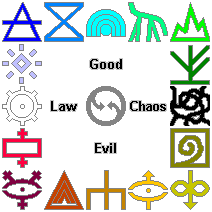 Li Po on the Outer Planes (silly graphics)
Li Po on the Outer Planes (silly graphics)
The Inner Planes
Reshaping the Multiverse: Li Po's ideas
for Planescape campaigns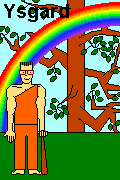
The Guvnurs look for the laws which explain the world,
hoping to learn how to make life less painful.
The Godsfolk see the pains of life as building us for a
higher form of existence.
The Hardheads want to change human nature for the
better, by coercion.
The Red Death seeks fair retribution.
The Ciphers don't think, but train so they can act.
The Signers become self-absorbed.
The Sensates glory in the richness of experience.
The Takers seek self-aggrandizement, and are contemptuous
of complainers.
The Doomguard hope for an end.
The Xaositects decide the universe is absurd.
The Bleakers are resigned.
The Revolutionary League blame those in power.
The Dustfolk seek the peace of death.
The Defiers seek an unknown transcendent answer.
The Free League keeps philosophic options open.
Sigil's mazes...
Cantrips
Abjurations: clean houses, campsites, or clothes,
chase away minor vermin, build simple traps,
and dispel cantrips (compare levels of casters.)
"Nothing is stronger than
gentleness; nothing is gentler than real strength." -- Francis
de Sales.
Li Po would like to hear from you about links to
New visitors to www.pathguy.com
reset Jan. 30, 2005:


Travis Morgan -- gym buddy, skydiver, long-term friend --
has a new site to help ordinary folks catch computer misbehavior.
Try one of Ed's chess-with-a-difference java applets!
 |
 |
 |
 |
 |
 |
 |
 |
 |
 |
 |
 |
 |
 |
 |
 |
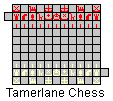 |
 |
 |
 |
 |
 |
 |
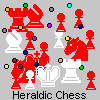 |
 |